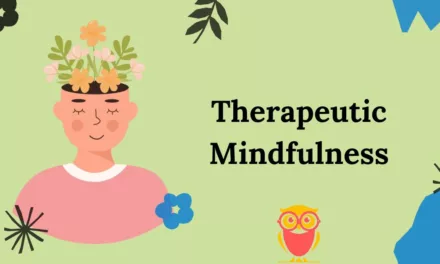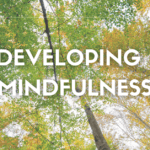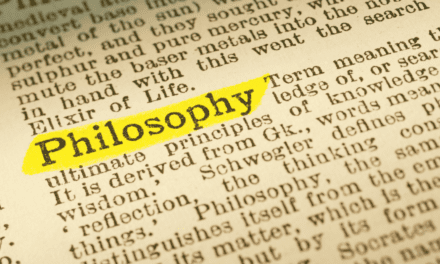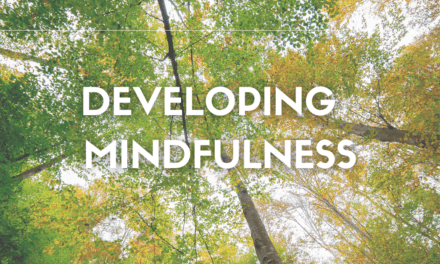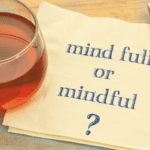
Why you should Start a Mindfulness and Meditation Practice – An AI perspective
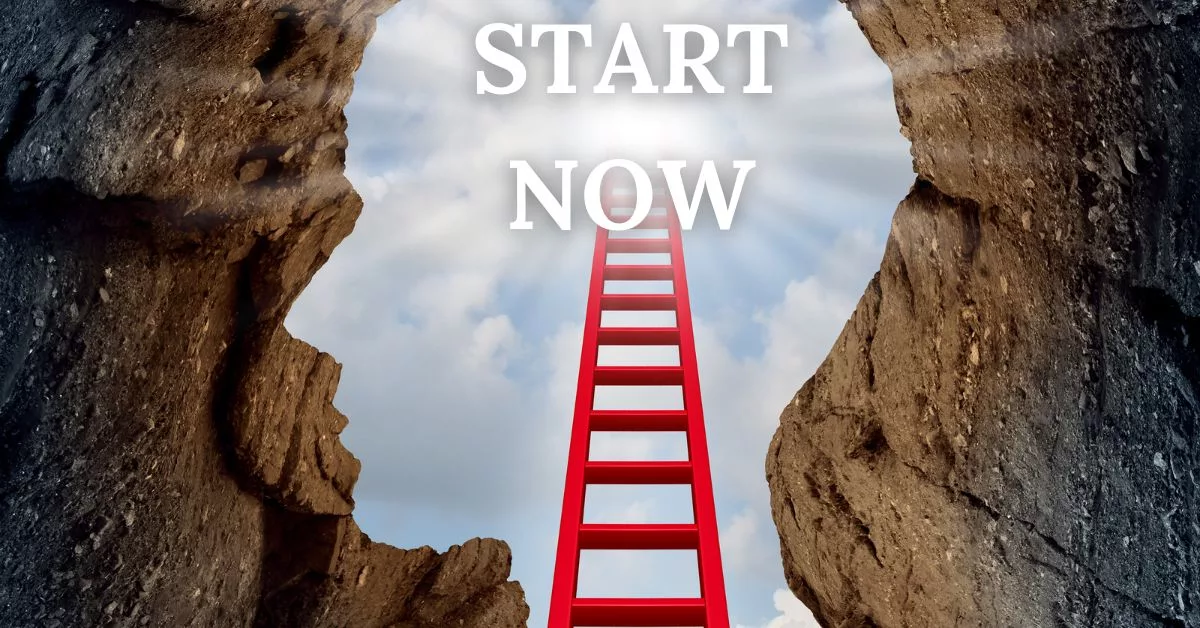
- Benefits of Meditation and Mindfulness
- Types of Meditation and Mindfulness Practices
- Finding the Right Practice for You
- Creating a Practice Schedule and Sticking to It
- Tips for Maximizing Your Meditation and Mindfulness Practice.
The Benefits of Practicing Mindfulness and Meditation
Mindfulness and meditation are two powerful practices that offer many potential benefits for both the mind and the body. In this blog post, we’ll explore some of the ways that mindfulness and meditation can be helpful, from reducing stress and anxiety to improving focus and clarity.
Benefits of Mindfulness and Meditation
Mindfulness and meditation can help us to become more aware of our thoughts and feelings, allowing us to manage our emotions better and make better decisions. Additionally, it can help to reduce stress and anxiety, improve concentration, and even provide physical benefits such as better sleep, improved immunity, and even a decrease in pain.
Stress and Anxiety Relief
Practicing mindfulness and meditation can help reduce stress and anxiety by calming the mind and promoting a sense of inner peace and balance. Studies have shown that regular meditation can help to reduce cortisol levels, which can in turn reduce feelings of stress and anxiety.
Improved Focus and Clarity
Mindfulness and meditation can also help to improve focus and clarity, allowing us to become more productive and efficient in our day-to-day activities. Regular practice can help to quiet the mind, allowing us to become more aware of our thoughts and feelings and make better decisions. Additionally, it can help us to stay present in the moment, enabling us to stay focused even when faced with distractions.
Better Sleep
Finally, mindfulness and meditation can help to improve the quality of our sleep. By calming the mind and body, we can create a more restful sleep environment, allowing us to get the rest we need to be productive and energized. Regular meditation can also help to reduce insomnia and other sleep disturbances, leading to a more restful night’s sleep.
Summary
Mindfulness and meditation are powerful practices that offer a multitude of potential benefits. From stress and anxiety relief to improved focus and clarity, these practices can help us to lead healthier and more balanced lives. Additionally, regular meditation can help to improve the quality of our sleep, allowing us to get the rest we need to be productive and energized.
In conclusion, mindfulness and meditation are two powerful practices that can provide numerous benefits for both the mind and the body. By taking the time to practice these techniques regularly, we can improve our overall well-being and lead a more balanced and fulfilling life.
Types of Mindfulness and Meditation Practices
Mindfulness and meditation practices are becoming increasingly popular in modern society. From reducing stress and improving mental clarity to providing spiritual guidance, these practices can have a significant impact on health and wellbeing. In this blog post, we’ll explore the different types of mindfulness and meditation practices available.
Breathwork Meditation
Breathwork meditation is a type of meditation that focuses on the breath. Through intentional and focused breathing, practitioners are able to achieve a state of mindfulness and relaxation. This type of meditation is often used to reduce stress and anxiety, and can also be helpful in improving physical health and emotional wellbeing.
Mindful Movement
Mindful movement is a type of mindfulness practice that combines physical movement with mindful awareness. This practice can help to reduce stress and improve physical health, while also providing practitioners with an opportunity to cultivate greater self-awareness and connection to the present moment.
Mantra Meditation
Mantra meditation is a type of meditation practice that involves repeating a mantra, or sacred phrase, in order to connect with a higher power. This type of meditation can be used to cultivate greater inner peace and clarity, as well as to develop a deeper connection to one’s spiritual practice.
Finding the Right Mindfulness and Meditation Practice for You
Mindfulness and meditation are becoming increasingly popular ways to reduce stress, improve concentration, and find peace of mind. There are many different types of practices available, so it can be difficult to decide which one is right for you. This blog post will explore the different types of mindfulness and meditation practices and provide guidance on how to choose the right one.
Mindfulness Practices
Mindfulness is the practice of being present and aware in the moment. It can involve activities such as mindful eating, mindful walking, and body scans. It is important to choose a practice that is simple and fits your lifestyle. For example, if you are an early riser, you may want to try a morning mindfulness practice.
Mindful eating is a great way to become more aware of your food choices and to enjoy your meals. It involves focusing on the smells, flavors, textures, and colors of the food. You can also use mindful eating to become aware of your emotions and feelings related to eating.
Mindful walking is another great practice to help connect your body and mind. It involves paying attention to the sensations of walking, such as the feeling of your feet on the ground and the movement of your arms. Mindful walking can also involve engaging your senses, such as noticing the sounds and smells of nature.
Body scans are a type of mindfulness practice that involve focusing on the sensations in each part of the body. It can help to release any tension and provide a sense of relaxation.
Meditation Practices
Meditation is a practice of focusing the mind and can involve sitting still in silence or repeating a mantra or affirmation. It is important to choose a practice that is comfortable and fits your lifestyle. For example, if you are short on time, you may want to try a short meditation practice.
Sitting meditation is the traditional form of meditation and involves sitting still in silence for a period of time. It can help to cultivate a sense of stillness and awareness. Sitting meditation can be done for as little as five minutes.
Loving-kindness meditation, also known as Metta meditation, is a practice of sending love and kindness to yourself and others. It involves repeating phrases of loving-kindness and can be used to cultivate a sense of connection.
Mantra meditation is a practice of repeating a phrase or sound to help focus the mind. It can be used to help cultivate a sense of calm and clarity.
Affirmation meditation involves repeating positive affirmations to yourself. It can be used to help boost your self-esteem and increase your sense of worth.
Summary
Mindfulness and meditation can be great tools to help reduce stress, improve concentration, and find peace of mind. There are many different types of practices available, so it is important to find one that is comfortable and fits your lifestyle. By exploring the different types of mindfulness and meditation practices, you can find the one that is right for you.
How to Find the Right Mindfulness and Meditation Practice Schedule and Stick to It
Sticking to a mindfulness and meditation practice schedule can be a challenge. It’s important to have a plan in place that works with your lifestyle and needs. In this blog post, we’ll explore how to find the right mindfulness and meditation practice schedule and how to stick to it.
Setting Up a Schedule
The first step in creating a mindfulness and meditation practice schedule is to set up a plan that fits your lifestyle. Consider your daily responsibilities and obligations and decide how much time you can realistically devote to your practice. Once you have a rough plan in place, it’s time to research mindfulness and meditation techniques that suit your needs.
Researching Techniques
There are many different mindfulness and meditation techniques out there. It’s important to research and find techniques that fit your lifestyle and needs. Consider your goals and objectives and find techniques that will help you reach them. Consider your daily schedule and find techniques that fit within it.
Sticking to Your Schedule
Once you have your mindfulness and meditation practice schedule in place, it’s important to stick to it. Make sure to set reminders and create daily and weekly rituals that will help you stay on track. It’s also important to be flexible and adjust your practice as needed to fit your changing lifestyle and needs.
Summary
Finding the right mindfulness and meditation practice schedule and sticking to it can be a challenge. It’s important to set up a plan that works with your lifestyle, research techniques that suit your needs, and create daily and weekly rituals to help you stay on track. With a bit of planning and dedication, you can find the right mindfulness and meditation practice schedule and stick to it.
Tips for Maximizing Your Meditation and Mindfulness Practice
Mindfulness and meditation can be powerful tools for improving your mental health, however the benefits of these practices can be hard to achieve. In this post, we’ll explore some tips for helping you maximize your meditation and mindfulness practice.
Setting Goals
It can be helpful to set goals for your practice, such as a specific number of minutes to meditate for each day. Having tangible goals can help give you focus and direction, and will help you measure your progress over time.
Finding the Right Environment
Creating a peaceful and comfortable environment can be key to a successful meditation and mindfulness practice. Find a space that is quiet and free from distractions. Take some time to make sure the temperature is comfortable and the lighting is just right.
Working with a Teacher
Often, it can be helpful to work with a teacher to help guide your practice. A teacher can provide valuable insight and advice, and can help you stay motivated and engaged.
Conclusion
Meditation and mindfulness can be powerful tools for improving your mental health, but it is important to make sure you are setting yourself up for success. Taking the time to set goals, find the right environment, and work with a teacher can help ensure that you are getting the most out of your practice.
Mindfulness and meditation are powerful practices that can provide numerous benefits for both the mind and the body. This blog post provides tips on how to find the right practice for you, create a practice schedule, and maximize your meditation and mindfulness practice. From setting up a schedule and researching techniques to creating daily and weekly rituals and being flexible, this post provides guidance on how to get the most out of your mindfulness and meditation practice.
Additional Resources
- Headspace: https://www.headspace.com/ – A popular meditation app that offers guided meditations and mindfulness exercises for beginners and experienced practitioners alike.
- Mindful: https://www.mindful.org/ – A website dedicated to mindfulness and meditation, offering articles, guided meditations, and resources for beginners and advanced practitioners.
- Insight Timer: https://insighttimer.com/ – A meditation app with a large library of guided meditations and mindfulness practices, as well as a timer for unguided meditation.
- UCLA Mindful Awareness Research Center: https://www.uclahealth.org/marc/ – A research center that offers free guided meditations and resources for developing mindfulness skills.
- The Mindfulness Summit: https://themindfulnesssummit.com/ – An online mindfulness summit featuring talks and interviews with mindfulness experts, along with guided meditations and other resources.


